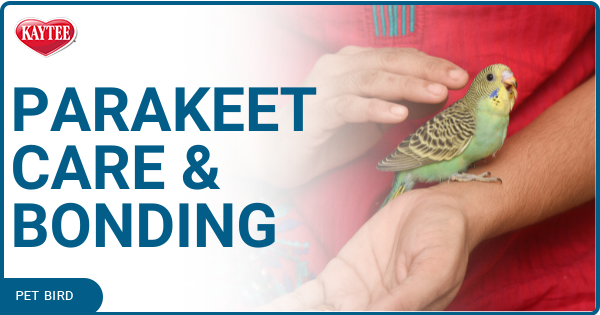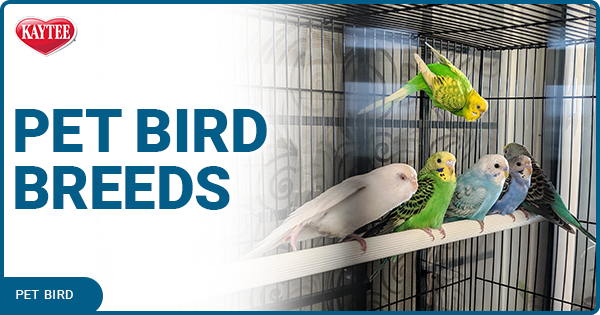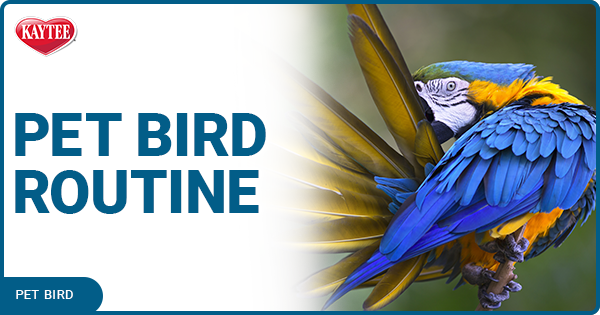Pet birds are naturally vocal with a wide repertoire of whistles, chirps, and other sounds, but what do those sounds mean? Understanding common pet bird sounds can help you interpret your bird's language and ensure it is healthy and happy.
Why Birds Make Noises
Birds make different sounds to express their needs for food and companionship, raise alarms about danger, or just share joy or relieve stress. Young birds generally make fewer sounds, but as they mature, they learn more vocalizations. If you recognize your bird's sounds, you can more easily meet its needs and understand its behavior.
Common Pet Bird Sounds and What They Mean
Different birds may have different vocalizations depending on their species, age, gender, and what sounds they've heard around them. Most pet birds, however, make similar sounds in similar situations, and these common sounds offer great clues to your bird's health and emotions.
1.Chirping
Chirping is 1-2 quick notes with a burbling tone as the notes are repeated. This is a generally happy sound to reassure other birds in its immediate flock, though if there is a raspy quality to the chirps, the bird may be getting stressed or upset.
2. Whistling
More melodious and drawn out, whistling has rising and falling notes and may change pitch in a distinctive pattern. Pet birds may whistle repetitively, but this is a happy, healthy sound, so there's nothing to worry about.
3. Chiding
A hiss-like or “tsssk” sound, chiding is a raspy, abrupt noise. This signals anger, stress, or frustration, and could be used to warn off another bird in the cage. When the bird is most angry, chiding could be accompanied by raised wings, lunging, or biting.
4. Squawks, Screeches, and Screams
These sounds are related but differ in degree. A louder alarm or distress call might signal that the bird has seen a cat or other predator, is unhappy in the cage, or is annoyed at some disturbance. Shorter sounds are squawks, midsized sounds are screeches, and the longest, loudest sounds are screams.
5. Mimicry
Many pet birds are excellent mimics, copying sounds they hear. This could include doorbells, ringtones, music, and even words. Different parrots can learn dozens of different sounds, showing their intelligence and attentiveness to their environment. Repeating these sounds is generally happy and a way to get attention.
Quieting A Noisy Bird
It is impossible to expect a pet bird to be quiet, and in fact, a completely silent bird is one that is likely stressed, injured, or sick. If a bird is too noisy, however, there are ways to discourage excess sound.
• Address the bird's needs by providing food, toys, and interaction.
• Check for nearby threats or unknown objects that may be causing stress.
• Lower the room's overall noise level so the bird is not competing for volume.
• Do not reward undesirable noises, so long as the bird isn't in real distress.
• Cover the bird's cage for a short time to remove unwanted stimuli.
Above all, be patient. Making noise is natural, and the better you interpret what your pet bird is saying, the better you both will communicate.
Before you can bring a bird into your home, you must purchase everything you will require for his care. Fortunately, all the items your pet will need should be available from your local pet store. The following are the basic must-have supplies.
Habitat
The size of the habitat you need will depend on the bird (or birds) you plan to keep, but a good rule of thumb is to house your bird in the largest habitat that you can afford and have room for in your home. (If you can't purchase or place a very large habitat, you shouldn't acquire a large bird.)
Your habitat should be square or rectangular rather than round to provide your pet with more room to fly and move. Also, the bars should be evenly spaced, not tapered toward the top. In a habitat with tapered bars, a bird can get his toe, wing, or even his head caught where the bars come together, causing serious injury. The habitat should also have a removable grate at the bottom (usually made of metal) above the habitat tray that catches the bird's waste and prevents him from getting to it.
The habitat itself should be made of metal or a combination of metal and plastic (combo habitats for small birds only). Stainless steel (best), powder-coated steel (better), and galvanized after weld (good) suitable habitat materials—other metals may contain harmful toxins that your bird could ingest. Acrylic habitats can also work well for smaller birds because the solid walls prevent mess, but moisture can build up in the habitat if it doesn't have adequate ventilation.
Bedding/Habitat Lining
A variety of materials can be used to line your bird's habitat, but the best options are newspaper or commercial bird litters such as Kaytee Walnut Litter. Both are safe, inexpensive, easy to replace, and clearly show a bird's droppings, which can be important for monitoring his health. (A change in droppings may indicate a potential health problem.) If you suspect health issues due to dropping appearance, place wax paper down as a liner to get a really good look at the droppings.
Food and Water
Stainless steel is the ideal material for food & water cups because it's easy to scrub and disinfect. Although your habitat may come with a couple plastic cups, these can become scratched, allowing bacteria to grow in the crevices. Birds can also be taught to use a water bottle, ensuring they cannot reach it and chew through it.
Food
For long-term good health provide a balanced diet, preferably a pelleted of extruded diet. Supplement with fresh vegetables and fruits depending on the species. High value items like high fat seed and nuts make excellent training treats. A seed mix diet may be deficient in minerals, especially calcium, as well as vitamins and amino acids, so mineral block or cuttlebone should be provided. This should not be necessary if the bird is eating primarily a pelleted or extruded diet.
A breeding female may need additional calcium to form eggs.
Perches
Perches can be made of natural branches, wood, plastic or PVC, rope, concrete, or pumice. Each has its own advantages and disadvantages. Offer your bird perches of assorted materials which vary in diameter. A bird who stands on the same perch consistently may develop foot disorders, especially if it is hard and abrasive or too large for its feet. Ideally the foot should wrap approximately ¾ of the way around the perch. Change out the perches, as you do bird toys this way a bird that likes to stand in the exact same spot will be forced to stand on a different perch.
Bird Bath
Birds bathe in a variety of ways. Some birds love to be misted with fine mist from a bottle of warm water, others love to bathe in a shallow bowl while others still will like to join you in the shower! That’s right, you can purchase a shower perch and let your bird spend quality time with you. Baths are very important to a birds’ health, remember many birds come from a tropical climate that is very humid and wet. Play with bathing to find out which way your bird likes best, you want bathing to be enjoyable – not stressful! Bathing supplies can be purchased at your local pet store or department store.
Toys and Enrichment
Most birds benefit from having items in their habitat to keep them active and entertained. A wide variety of toys are available, and different birds enjoy different types of toys.
Provide a variety of toy types for your bird in the habitat setup: thinking toys (items that stimulate his mind); action toys (items that make a lot of noise or require your bird to move); comfort toys (items that your bird can enjoy calmly and quietly); and toys to destroy (items he can chew to keep his beak in good condition). You’ll quickly see which toys your bird prefers and this will allow you to keep him well entertained. A bored bird can quickly pick up bad, remember birds in the wild are very active and are ever moving and foraging.
There are other ways to enrich your bird’s life than just toys, although toys are a necessary item! You can purchase or play video’s for your birds with other bird sounds or just interesting audio. A more current approach is to enrich your bird by providing foraging opportunities, treats hidden within toys or homemade items such as a cardboard tube and coffee filters. Be creative, but safe!
Travel Carrier
A travel carrier is necessary for taking your bird to the vet's office and other places. Soft fabric carriers are popular, but if your bird is ill they are difficult to disinfect. Plastic airline kennels are also practical and easy to disinfect if needed. It should also have adequate ventilation and a place to put food and water dishes. If you plan to travel with your pet, select a model which will fit under the seat of an airplane.
It’s important to make the carrier a safe and desirable destination, this can be done by using it as a place to offer treats and allow your bird to walk in on its own to fetch those treats. If a bird is caught up and placed aggressively in the carrier, it will quickly become a scary place they don’t want to go and each time will become harder and harder to get your bird into it.
Before you can bring a bird into your home, you must purchase everything you will require for his care. Fortunately, all the items your pet will need should be available from your local pet store. The following are the basic must-have supplies.
Habitat
The size of the habitat you need will depend on the bird (or birds) you plan to keep, but a good rule of thumb is to house your bird in the largest habitat that you can afford and have room for in your home. (If you can't purchase or place a very large habitat, you shouldn't acquire a large bird.)
Your habitat should be square or rectangular rather than round to provide your pet with more room to fly and move. Also, the bars should be evenly spaced, not tapered toward the top. In a habitat with tapered bars, a bird can get his toe, wing, or even his head caught where the bars come together, causing serious injury. The habitat should also have a removable grate at the bottom (usually made of metal) above the habitat tray that catches the bird's waste and prevents him from getting to it.
The habitat itself should be made of metal or a combination of metal and plastic (combo habitats for small birds only). Stainless steel (best), powder-coated steel (better), and galvanized after weld (good) suitable habitat materials—other metals may contain harmful toxins that your bird could ingest. Acrylic habitats can also work well for smaller birds because the solid walls prevent mess, but moisture can build up in the habitat if it doesn't have adequate ventilation.
Bedding/Habitat Lining
A variety of materials can be used to line your bird's habitat, but the best options are newspaper or commercial bird litters such as Kaytee Walnut Litter. Both are safe, inexpensive, easy to replace, and clearly show a bird's droppings, which can be important for monitoring his health. (A change in droppings may indicate a potential health problem.) If you suspect health issues due to dropping appearance, place wax paper down as a liner to get a really good look at the droppings.
Food and Water
Stainless steel is the ideal material for food & water cups because it's easy to scrub and disinfect. Although your habitat may come with a couple plastic cups, these can become scratched, allowing bacteria to grow in the crevices. Birds can also be taught to use a water bottle, ensuring they cannot reach it and chew through it.
Food
For long-term good health provide a balanced diet, preferably a pelleted of extruded diet. Supplement with fresh vegetables and fruits depending on the species. High value items like high fat seed and nuts make excellent training treats. A seed mix diet may be deficient in minerals, especially calcium, as well as vitamins and amino acids, so mineral block or cuttlebone should be provided. This should not be necessary if the bird is eating primarily a pelleted or extruded diet.
A breeding female may need additional calcium to form eggs.
Perches
Perches can be made of natural branches, wood, plastic or PVC, rope, concrete, or pumice. Each has its own advantages and disadvantages. Offer your bird perches of assorted materials which vary in diameter. A bird who stands on the same perch consistently may develop foot disorders, especially if it is hard and abrasive or too large for its feet. Ideally the foot should wrap approximately ¾ of the way around the perch. Change out the perches, as you do bird toys this way a bird that likes to stand in the exact same spot will be forced to stand on a different perch.
Bird Bath
Birds bathe in a variety of ways. Some birds love to be misted with fine mist from a bottle of warm water, others love to bathe in a shallow bowl while others still will like to join you in the shower! That’s right, you can purchase a shower perch and let your bird spend quality time with you. Baths are very important to a birds’ health, remember many birds come from a tropical climate that is very humid and wet. Play with bathing to find out which way your bird likes best, you want bathing to be enjoyable – not stressful! Bathing supplies can be purchased at your local pet store or department store.
Toys and Enrichment
Most birds benefit from having items in their habitat to keep them active and entertained. A wide variety of toys are available, and different birds enjoy different types of toys.
Provide a variety of toy types for your bird in the habitat setup: thinking toys (items that stimulate his mind); action toys (items that make a lot of noise or require your bird to move); comfort toys (items that your bird can enjoy calmly and quietly); and toys to destroy (items he can chew to keep his beak in good condition). You’ll quickly see which toys your bird prefers and this will allow you to keep him well entertained. A bored bird can quickly pick up bad, remember birds in the wild are very active and are ever moving and foraging.
There are other ways to enrich your bird’s life than just toys, although toys are a necessary item! You can purchase or play video’s for your birds with other bird sounds or just interesting audio. A more current approach is to enrich your bird by providing foraging opportunities, treats hidden within toys or homemade items such as a cardboard tube and coffee filters. Be creative, but safe!
Travel Carrier
A travel carrier is necessary for taking your bird to the vet's office and other places. Soft fabric carriers are popular, but if your bird is ill they are difficult to disinfect. Plastic airline kennels are also practical and easy to disinfect if needed. It should also have adequate ventilation and a place to put food and water dishes. If you plan to travel with your pet, select a model which will fit under the seat of an airplane.
It’s important to make the carrier a safe and desirable destination, this can be done by using it as a place to offer treats and allow your bird to walk in on its own to fetch those treats. If a bird is caught up and placed aggressively in the carrier, it will quickly become a scary place they don’t want to go and each time will become harder and harder to get your bird into it.
Before you can bring a bird into your home, you must purchase everything you will require for his care. Fortunately, all the items your pet will need should be available from your local pet store. The following are the basic must-have supplies.
Habitat
The size of the habitat you need will depend on the bird (or birds) you plan to keep, but a good rule of thumb is to house your bird in the largest habitat that you can afford and have room for in your home. (If you can't purchase or place a very large habitat, you shouldn't acquire a large bird.)
Your habitat should be square or rectangular rather than round to provide your pet with more room to fly and move. Also, the bars should be evenly spaced, not tapered toward the top. In a habitat with tapered bars, a bird can get his toe, wing, or even his head caught where the bars come together, causing serious injury. The habitat should also have a removable grate at the bottom (usually made of metal) above the habitat tray that catches the bird's waste and prevents him from getting to it.
The habitat itself should be made of metal or a combination of metal and plastic (combo habitats for small birds only). Stainless steel (best), powder-coated steel (better), and galvanized after weld (good) suitable habitat materials—other metals may contain harmful toxins that your bird could ingest. Acrylic habitats can also work well for smaller birds because the solid walls prevent mess, but moisture can build up in the habitat if it doesn't have adequate ventilation.
Bedding/Habitat Lining
A variety of materials can be used to line your bird's habitat, but the best options are newspaper or commercial bird litters such as Kaytee Walnut Litter. Both are safe, inexpensive, easy to replace, and clearly show a bird's droppings, which can be important for monitoring his health. (A change in droppings may indicate a potential health problem.) If you suspect health issues due to dropping appearance, place wax paper down as a liner to get a really good look at the droppings.
Food and Water
Stainless steel is the ideal material for food & water cups because it's easy to scrub and disinfect. Although your habitat may come with a couple plastic cups, these can become scratched, allowing bacteria to grow in the crevices. Birds can also be taught to use a water bottle, ensuring they cannot reach it and chew through it.
Food
For long-term good health provide a balanced diet, preferably a pelleted of extruded diet. Supplement with fresh vegetables and fruits depending on the species. High value items like high fat seed and nuts make excellent training treats. A seed mix diet may be deficient in minerals, especially calcium, as well as vitamins and amino acids, so mineral block or cuttlebone should be provided. This should not be necessary if the bird is eating primarily a pelleted or extruded diet.
A breeding female may need additional calcium to form eggs.
Perches
Perches can be made of natural branches, wood, plastic or PVC, rope, concrete, or pumice. Each has its own advantages and disadvantages. Offer your bird perches of assorted materials which vary in diameter. A bird who stands on the same perch consistently may develop foot disorders, especially if it is hard and abrasive or too large for its feet. Ideally the foot should wrap approximately ¾ of the way around the perch. Change out the perches, as you do bird toys this way a bird that likes to stand in the exact same spot will be forced to stand on a different perch.
Bird Bath
Birds bathe in a variety of ways. Some birds love to be misted with fine mist from a bottle of warm water, others love to bathe in a shallow bowl while others still will like to join you in the shower! That’s right, you can purchase a shower perch and let your bird spend quality time with you. Baths are very important to a birds’ health, remember many birds come from a tropical climate that is very humid and wet. Play with bathing to find out which way your bird likes best, you want bathing to be enjoyable – not stressful! Bathing supplies can be purchased at your local pet store or department store.
Toys and Enrichment
Most birds benefit from having items in their habitat to keep them active and entertained. A wide variety of toys are available, and different birds enjoy different types of toys.
Provide a variety of toy types for your bird in the habitat setup: thinking toys (items that stimulate his mind); action toys (items that make a lot of noise or require your bird to move); comfort toys (items that your bird can enjoy calmly and quietly); and toys to destroy (items he can chew to keep his beak in good condition). You’ll quickly see which toys your bird prefers and this will allow you to keep him well entertained. A bored bird can quickly pick up bad, remember birds in the wild are very active and are ever moving and foraging.
There are other ways to enrich your bird’s life than just toys, although toys are a necessary item! You can purchase or play video’s for your birds with other bird sounds or just interesting audio. A more current approach is to enrich your bird by providing foraging opportunities, treats hidden within toys or homemade items such as a cardboard tube and coffee filters. Be creative, but safe!
Travel Carrier
A travel carrier is necessary for taking your bird to the vet's office and other places. Soft fabric carriers are popular, but if your bird is ill they are difficult to disinfect. Plastic airline kennels are also practical and easy to disinfect if needed. It should also have adequate ventilation and a place to put food and water dishes. If you plan to travel with your pet, select a model which will fit under the seat of an airplane.
It’s important to make the carrier a safe and desirable destination, this can be done by using it as a place to offer treats and allow your bird to walk in on its own to fetch those treats. If a bird is caught up and placed aggressively in the carrier, it will quickly become a scary place they don’t want to go and each time will become harder and harder to get your bird into it.
Before you can bring a bird into your home, you must purchase everything you will require for his care. Fortunately, all the items your pet will need should be available from your local pet store. The following are the basic must-have supplies.
Habitat
The size of the habitat you need will depend on the bird (or birds) you plan to keep, but a good rule of thumb is to house your bird in the largest habitat that you can afford and have room for in your home. (If you can't purchase or place a very large habitat, you shouldn't acquire a large bird.)
Your habitat should be square or rectangular rather than round to provide your pet with more room to fly and move. Also, the bars should be evenly spaced, not tapered toward the top. In a habitat with tapered bars, a bird can get his toe, wing, or even his head caught where the bars come together, causing serious injury. The habitat should also have a removable grate at the bottom (usually made of metal) above the habitat tray that catches the bird's waste and prevents him from getting to it.
The habitat itself should be made of metal or a combination of metal and plastic (combo habitats for small birds only). Stainless steel (best), powder-coated steel (better), and galvanized after weld (good) suitable habitat materials—other metals may contain harmful toxins that your bird could ingest. Acrylic habitats can also work well for smaller birds because the solid walls prevent mess, but moisture can build up in the habitat if it doesn't have adequate ventilation.
Bedding/Habitat Lining
A variety of materials can be used to line your bird's habitat, but the best options are newspaper or commercial bird litters such as Kaytee Walnut Litter. Both are safe, inexpensive, easy to replace, and clearly show a bird's droppings, which can be important for monitoring his health. (A change in droppings may indicate a potential health problem.) If you suspect health issues due to dropping appearance, place wax paper down as a liner to get a really good look at the droppings.
Food and Water
Stainless steel is the ideal material for food & water cups because it's easy to scrub and disinfect. Although your habitat may come with a couple plastic cups, these can become scratched, allowing bacteria to grow in the crevices. Birds can also be taught to use a water bottle, ensuring they cannot reach it and chew through it.
Food
For long-term good health provide a balanced diet, preferably a pelleted of extruded diet. Supplement with fresh vegetables and fruits depending on the species. High value items like high fat seed and nuts make excellent training treats. A seed mix diet may be deficient in minerals, especially calcium, as well as vitamins and amino acids, so mineral block or cuttlebone should be provided. This should not be necessary if the bird is eating primarily a pelleted or extruded diet.
A breeding female may need additional calcium to form eggs.
Perches
Perches can be made of natural branches, wood, plastic or PVC, rope, concrete, or pumice. Each has its own advantages and disadvantages. Offer your bird perches of assorted materials which vary in diameter. A bird who stands on the same perch consistently may develop foot disorders, especially if it is hard and abrasive or too large for its feet. Ideally the foot should wrap approximately ¾ of the way around the perch. Change out the perches, as you do bird toys this way a bird that likes to stand in the exact same spot will be forced to stand on a different perch.
Bird Bath
Birds bathe in a variety of ways. Some birds love to be misted with fine mist from a bottle of warm water, others love to bathe in a shallow bowl while others still will like to join you in the shower! That’s right, you can purchase a shower perch and let your bird spend quality time with you. Baths are very important to a birds’ health, remember many birds come from a tropical climate that is very humid and wet. Play with bathing to find out which way your bird likes best, you want bathing to be enjoyable – not stressful! Bathing supplies can be purchased at your local pet store or department store.
Toys and Enrichment
Most birds benefit from having items in their habitat to keep them active and entertained. A wide variety of toys are available, and different birds enjoy different types of toys.
Provide a variety of toy types for your bird in the habitat setup: thinking toys (items that stimulate his mind); action toys (items that make a lot of noise or require your bird to move); comfort toys (items that your bird can enjoy calmly and quietly); and toys to destroy (items he can chew to keep his beak in good condition). You’ll quickly see which toys your bird prefers and this will allow you to keep him well entertained. A bored bird can quickly pick up bad, remember birds in the wild are very active and are ever moving and foraging.
There are other ways to enrich your bird’s life than just toys, although toys are a necessary item! You can purchase or play video’s for your birds with other bird sounds or just interesting audio. A more current approach is to enrich your bird by providing foraging opportunities, treats hidden within toys or homemade items such as a cardboard tube and coffee filters. Be creative, but safe!
Travel Carrier
A travel carrier is necessary for taking your bird to the vet's office and other places. Soft fabric carriers are popular, but if your bird is ill they are difficult to disinfect. Plastic airline kennels are also practical and easy to disinfect if needed. It should also have adequate ventilation and a place to put food and water dishes. If you plan to travel with your pet, select a model which will fit under the seat of an airplane.
It’s important to make the carrier a safe and desirable destination, this can be done by using it as a place to offer treats and allow your bird to walk in on its own to fetch those treats. If a bird is caught up and placed aggressively in the carrier, it will quickly become a scary place they don’t want to go and each time will become harder and harder to get your bird into it.
Before you can bring a bird into your home, you must purchase everything you will require for his care. Fortunately, all the items your pet will need should be available from your local pet store. The following are the basic must-have supplies.
Habitat
The size of the habitat you need will depend on the bird (or birds) you plan to keep, but a good rule of thumb is to house your bird in the largest habitat that you can afford and have room for in your home. (If you can't purchase or place a very large habitat, you shouldn't acquire a large bird.)
Your habitat should be square or rectangular rather than round to provide your pet with more room to fly and move. Also, the bars should be evenly spaced, not tapered toward the top. In a habitat with tapered bars, a bird can get his toe, wing, or even his head caught where the bars come together, causing serious injury. The habitat should also have a removable grate at the bottom (usually made of metal) above the habitat tray that catches the bird's waste and prevents him from getting to it.
The habitat itself should be made of metal or a combination of metal and plastic (combo habitats for small birds only). Stainless steel (best), powder-coated steel (better), and galvanized after weld (good) suitable habitat materials—other metals may contain harmful toxins that your bird could ingest. Acrylic habitats can also work well for smaller birds because the solid walls prevent mess, but moisture can build up in the habitat if it doesn't have adequate ventilation.
Bedding/Habitat Lining
A variety of materials can be used to line your bird's habitat, but the best options are newspaper or commercial bird litters such as Kaytee Walnut Litter. Both are safe, inexpensive, easy to replace, and clearly show a bird's droppings, which can be important for monitoring his health. (A change in droppings may indicate a potential health problem.) If you suspect health issues due to dropping appearance, place wax paper down as a liner to get a really good look at the droppings.
Food and Water
Stainless steel is the ideal material for food & water cups because it's easy to scrub and disinfect. Although your habitat may come with a couple plastic cups, these can become scratched, allowing bacteria to grow in the crevices. Birds can also be taught to use a water bottle, ensuring they cannot reach it and chew through it.
Food
For long-term good health provide a balanced diet, preferably a pelleted of extruded diet. Supplement with fresh vegetables and fruits depending on the species. High value items like high fat seed and nuts make excellent training treats. A seed mix diet may be deficient in minerals, especially calcium, as well as vitamins and amino acids, so mineral block or cuttlebone should be provided. This should not be necessary if the bird is eating primarily a pelleted or extruded diet.
A breeding female may need additional calcium to form eggs.
Perches
Perches can be made of natural branches, wood, plastic or PVC, rope, concrete, or pumice. Each has its own advantages and disadvantages. Offer your bird perches of assorted materials which vary in diameter. A bird who stands on the same perch consistently may develop foot disorders, especially if it is hard and abrasive or too large for its feet. Ideally the foot should wrap approximately ¾ of the way around the perch. Change out the perches, as you do bird toys this way a bird that likes to stand in the exact same spot will be forced to stand on a different perch.
Bird Bath
Birds bathe in a variety of ways. Some birds love to be misted with fine mist from a bottle of warm water, others love to bathe in a shallow bowl while others still will like to join you in the shower! That’s right, you can purchase a shower perch and let your bird spend quality time with you. Baths are very important to a birds’ health, remember many birds come from a tropical climate that is very humid and wet. Play with bathing to find out which way your bird likes best, you want bathing to be enjoyable – not stressful! Bathing supplies can be purchased at your local pet store or department store.
Toys and Enrichment
Most birds benefit from having items in their habitat to keep them active and entertained. A wide variety of toys are available, and different birds enjoy different types of toys.
Provide a variety of toy types for your bird in the habitat setup: thinking toys (items that stimulate his mind); action toys (items that make a lot of noise or require your bird to move); comfort toys (items that your bird can enjoy calmly and quietly); and toys to destroy (items he can chew to keep his beak in good condition). You’ll quickly see which toys your bird prefers and this will allow you to keep him well entertained. A bored bird can quickly pick up bad, remember birds in the wild are very active and are ever moving and foraging.
There are other ways to enrich your bird’s life than just toys, although toys are a necessary item! You can purchase or play video’s for your birds with other bird sounds or just interesting audio. A more current approach is to enrich your bird by providing foraging opportunities, treats hidden within toys or homemade items such as a cardboard tube and coffee filters. Be creative, but safe!
Travel Carrier
A travel carrier is necessary for taking your bird to the vet's office and other places. Soft fabric carriers are popular, but if your bird is ill they are difficult to disinfect. Plastic airline kennels are also practical and easy to disinfect if needed. It should also have adequate ventilation and a place to put food and water dishes. If you plan to travel with your pet, select a model which will fit under the seat of an airplane.
It’s important to make the carrier a safe and desirable destination, this can be done by using it as a place to offer treats and allow your bird to walk in on its own to fetch those treats. If a bird is caught up and placed aggressively in the carrier, it will quickly become a scary place they don’t want to go and each time will become harder and harder to get your bird into it.
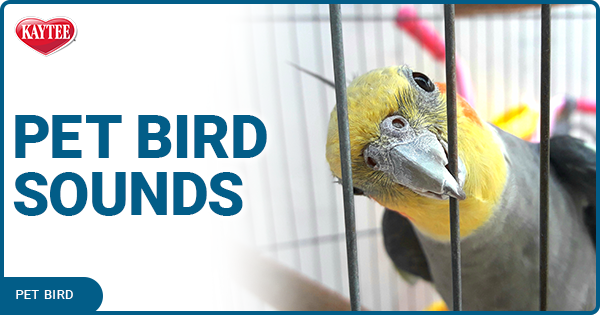
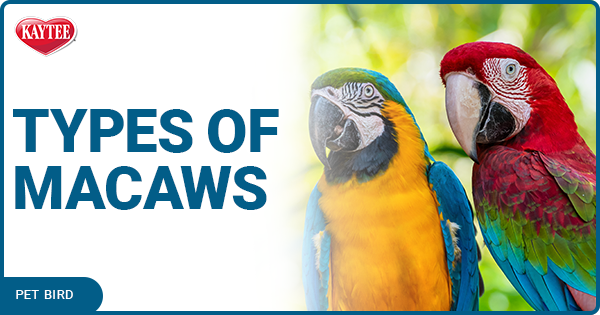
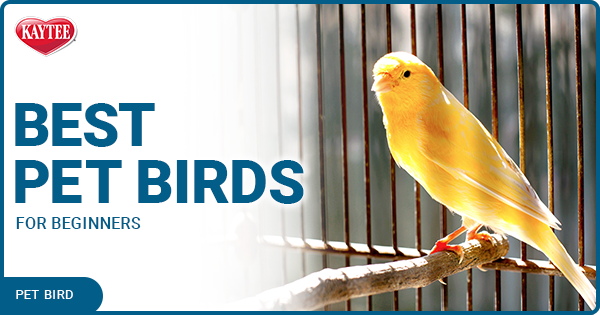
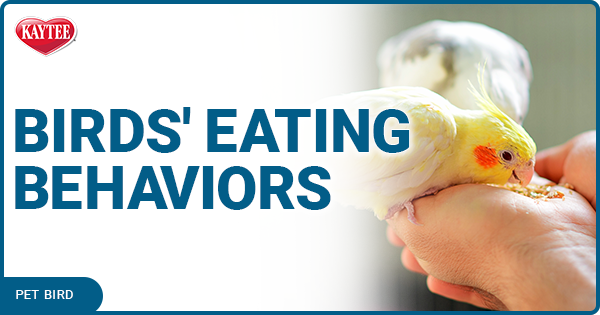
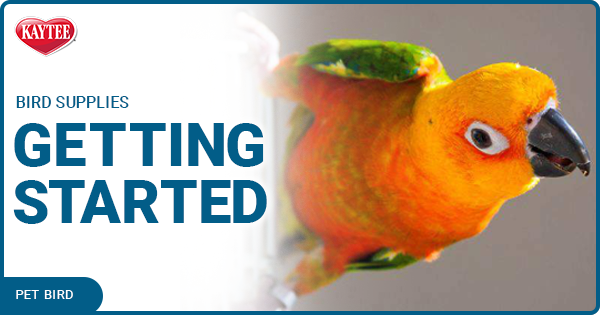
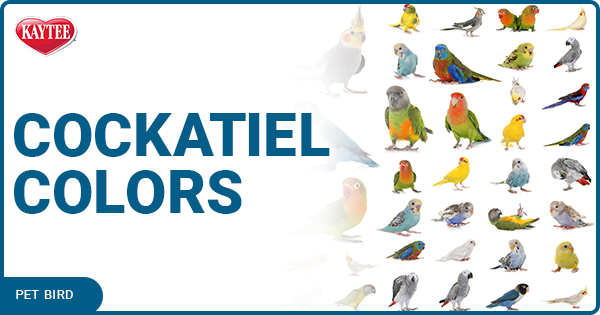
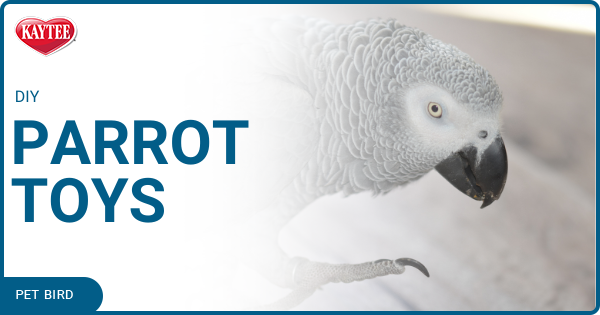
.png?h=315&iar=0&w=600&hash=D97DB36D5E3F21371C65308B485A4F28)
